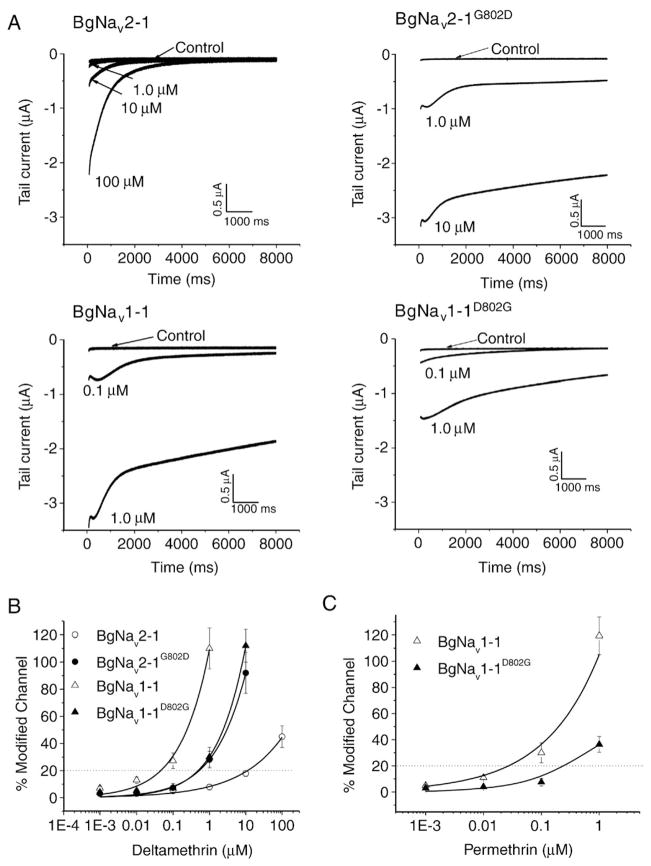Fig. 1.
The D802G change in the BgNav2-1 channel is partially responsible for the resistance of BgNav2-1 to deltamethrin. A, Tail currents induced by deltamethrin in BgNav2-1G802D, BgNav2-1, BgNav1-1, and BgNav1-1D802G channels. The tail current was elicited by a 67-Hz train of 100 5-ms depolarization from −120 to 0 mV. B and C, Percentage of channel modification by deltamethrin (B) and permethrin (C). Percentages of channels modified by pyrethroids was calculated using the equation M={[Itail/(Eh−ENa)]/[INa/(Et−ENa)]}×100 (Tatebayashi and Narahashi, 1994),where Itail is the maximal tail current amplitude, Eh is the potential to which the membrane is repolarized, ENa is the reversal potential for sodium current determined from the current–voltage curve, INa is the amplitude of the peak current during depolarization before pyrethroid exposure, and Et is the potential of step depolarization. The values of EC20 for deltamethrin are 0.04 μM, 0.48 μM, 0.51 μM, and 12.4 μM for BgNav1-1, BgNav1-1D802G, BgNav2-1G802D, BgNav2-1 channels, respectively. The values of EC20 for permethrin are 0.03 μM and 0.25 μM for BgNav1-1 and BgNav1-1D802G, respectively.

